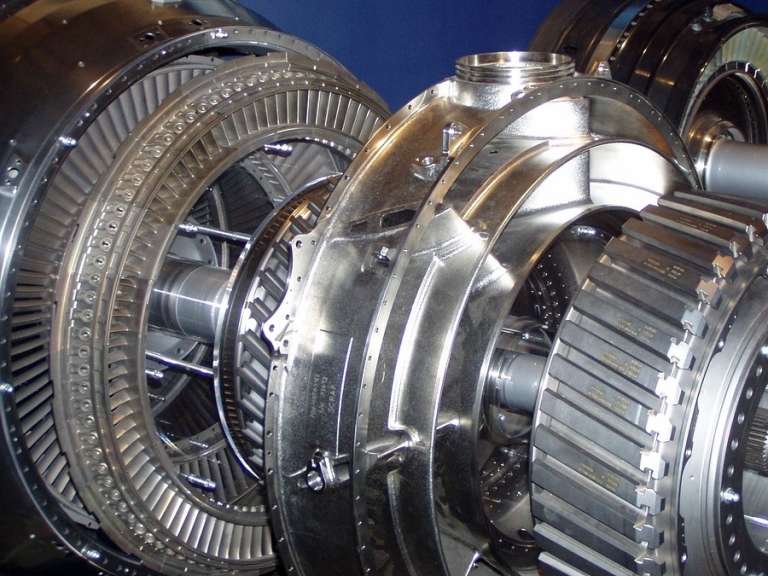When power plants get old, owners can opt to retire them and rebuild. But a cheaper and faster option is turbine replacement.
You can upgrade a thermal power plant with a new turbine at a fraction of the cost and time required to tear everything down and rebuild. This process helps to squeeze more life out of the rest of the plant's infrastructure.
Making Old New Again
This kind of upgrade entails the full replacement of an existing gas turbine core engine with a new production engine, from the casings to the compressor blades, rotor, vanes and the combustion system.
The upgrade has multiple benefits. The first is that it outfits a power plant with the latest technology and engineering innovation to improve output, fuel efficiency, and flexibility. The second is the cost and time savings. With turbine replacement, you can leverage the remaining value from your plant's assets to increase its overall reliability; extend maintenance intervals; reduce emissions; lower fuel costs; and increase output. The upgrade boosts your plant's performance and lowers maintenance costs—without forcing you to dismantle the entire facility for a rebuild, a process that would take much longer.
Retiring So Soon?
There's notable demand for turbine replacements. Consider the situation in the US. Nearly 15 GW of power capacity is poised for retirement this year, up from around 10 GW in 2017, according to data from the US Energy Information Administration (EIA). The retirements will hold steady at around five GW in 2019 and 2020, the EIA forecasts.
Of the retirements over the past decade, most have been of fossil-fired plants, led by coal at 47 percent and gas at 26 percent, the EIA's data shows.
The leading factors for retirement are age and low capacity. Indeed, the coal power plants that retired between 2008 and 2017 in the US were old and small, averaging 52 years and 105 MW of capacity, according to the EIA.
Another driver is that solar, wind, and other renewables are gaining in competitiveness, and policies are prioritizing their production over fossil-fired generation, the EIA says. This is posing challenges for fossil-fired plants trying to compete in the power dispatch order—plants with higher emissions or cost margins are particularly disadvantaged.
Upgrade Urgency
For many aging plants, it's not just a question of whether to retire or renew. Regulatory changes may require owners to upgrade their power plants.
This is what Chubu Electric Power Co. faced in Japan in 2011. Following the Fukushima Daiichi nuclear incident, the Japanese government requested the shutdown of other nuclear plants, including Chubu's Hamaoka Nuclear Power Plant, according to a press release from Chubu at the time.
After agreeing to the plant's shutdown, Chubu needed a fast solution to upgrade its fossil-fired power plants to make up for the lost output and meet demand. The company wanted to incorporate the latest technology into its gas turbine fleet with the least-possible disruption to plant operations—and output.
The first project was at its 1,700-MW Chita Daini thermal plant. Using a flange-to-flange solution, Chubu replaced the entire gas turbine engine as one piece, from the inlet flange to the exhaust flange, with a more efficient model. In addition to increasing output and efficiency, this turbine replacement saved money, as it was completed at a low cost. It also addressed the need for asset life extension, performance recovery, rehabilitation, emissions controls, and fuel flexibility. To boot, the life of Chubu's gas turbine was extended by 20 years—and the plant's vendor finished the upgrade in time to meet peak demand in the summer of 2012.
Staying in the Game
In Spain, another company also faced the urgent situation of either upgrading its power plant or suffering financial losses.
Industrias Celulosa Aragonesa, a maker of corrugated cardboard boxes, had been operating a gas turbine for 15 years at its paper mill in Zaragoza, a city in northeast Spain. But it had to upgrade to meet the country's stiffer environmental regulations for efficiency and emissions, or fail to qualify for a total feed-in tariff on the national grid.
An extensive upgrade would disrupt the mill's production line, hurting sales.
So the option of a turbine replacement made more sense. It allowed the miller to renew its plant with the latest gas turbine in just seven weeks, by replacing the existing unit with a brand-new one that met the stricter environmental standards and improved performance, according to a release on Cision PRWeb. The mill's NOx emissions fell to 12 ppm from 150 ppm and efficiency improved by three percent, according to the release. These improvements even allowed the mill to sell excess output from the 38-MW plant on the national power grid.
A Competitive Edge
The demand for turbine replacements will grow, as plants reach retirement or face the challenge of upgrading to meet cleaner energy regulations.
But turbine replacement can also help plants sustain a competitive edge in the business by installing "a new gas turbine with all of the capability of the latest and greatest equipment," Nathan Race, a senior product manager at GE's Power Services business, told Power Engineering International.
He estimated that plant performance improves by five percent or more with turbine replacement.
The need for performance is growing in importance as renewables create an increasingly competitive power trade. Any upgrade that can deliver this performance at a low cost is an advantage. It restarts the clock for aging fossil-fired plants to live a lucrative second life.
